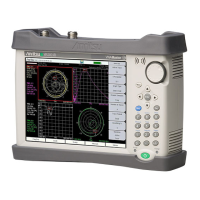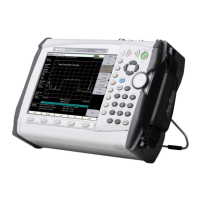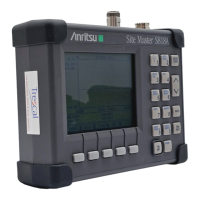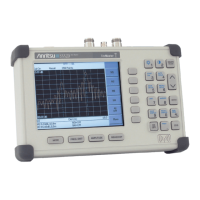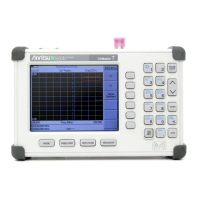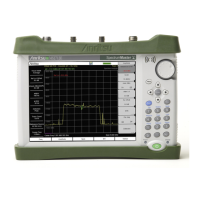Glossary of Terms
H-4 PN: 10580-00305 Rev. L MS20xxC UG
Calibration : When making measurements, the instrument must be calibrated in
order to remove residual errors due to measurement setup conditions.
Anritsu recommends performing the calibration under the same
conditions as the measurement: temperature, frequency, number of
points, source power, and IFBW. Calibrations standards with known
reflection coefficients are used to calculate the correction factors. The
calibration must be conducted using the appropriate standards at the
open end of any test port cables and adapters that are connected to the
instrument. This ensures that the match, phase length, and loss of
these cables and adapters are all accounted for. For optimal
performance, high quality phase-stable cables and precision adapters
must be used.
Cell Site : Cell Site, also called Base Station, is the local cellular tower and radio
antenna (including the radios, controller, switch interconnect, etc.) that
handles communication with subscribers in a particular area or cell. A
cellular network is made up of many cell sites, all connected back to the
switch via landline or microwave.
Coaxial Cable : Coaxial Cable (Coax) is a type of electrical communications medium
used in the LAN environment. This cable consists of an outer conductor
concentric to an inner conductor, separated from each other by
insulating material, and covered by some protective outer material.
This medium offers large bandwidth, supporting high data rates with
high immunity to electrical interference and a low incidence of errors.
Coax is subject to distance limitations and is relatively expensive and
difficult to install.
CW : Continuous Wave (CW)
DANL : Displayed Average Noise Level (DANL): Displayed average noise level
is sometimes confused with the term Sensitivity. While related, these
terms have different meanings. Sensitivity is a measure of the
minimum signal level that yields a defined signal-to-noise ratio (SNR)
or bit error rate (BER). It is a common metric of radio receiver
performance. Spectrum analyzer specifications are always given in
terms of the DANL. One of the primary uses of a spectrum analyzer is to
search out and measure low-level signals. The limitation in these
measurements is the noise generated within the spectrum analyzer
itself. This noise, generated by the random electron motion in various
circuit elements, is amplified by multiple gain stages in the analyzer
and appears on the display as a noise signal. On a spectrum analyzer,
this noise is commonly referred to as the Displayed Average Noise
Level, or DANL 1. While there are techniques to measure signals
slightly below the DANL, this noise power ultimately limits our ability
to make measurements of low-level signals.
